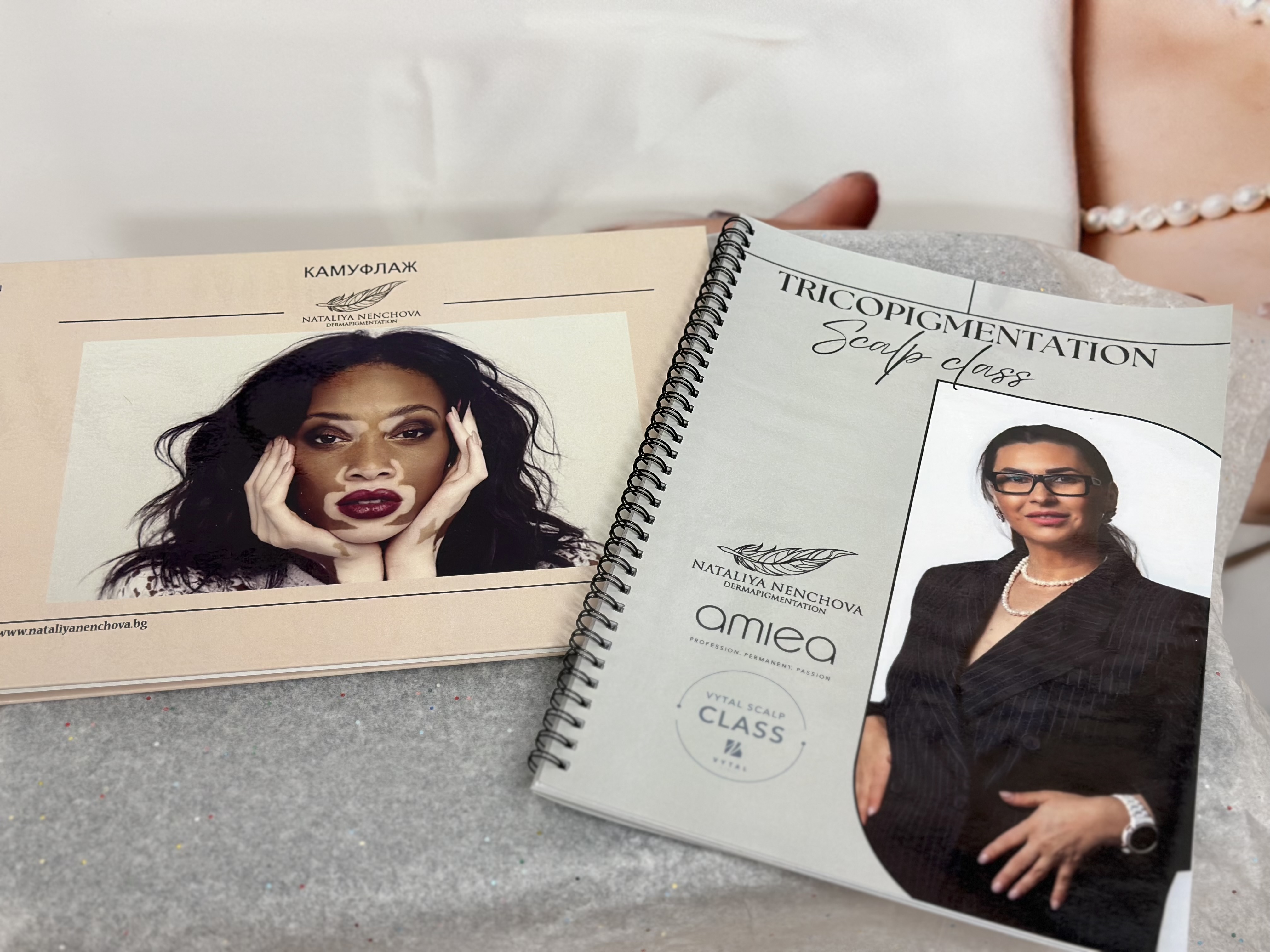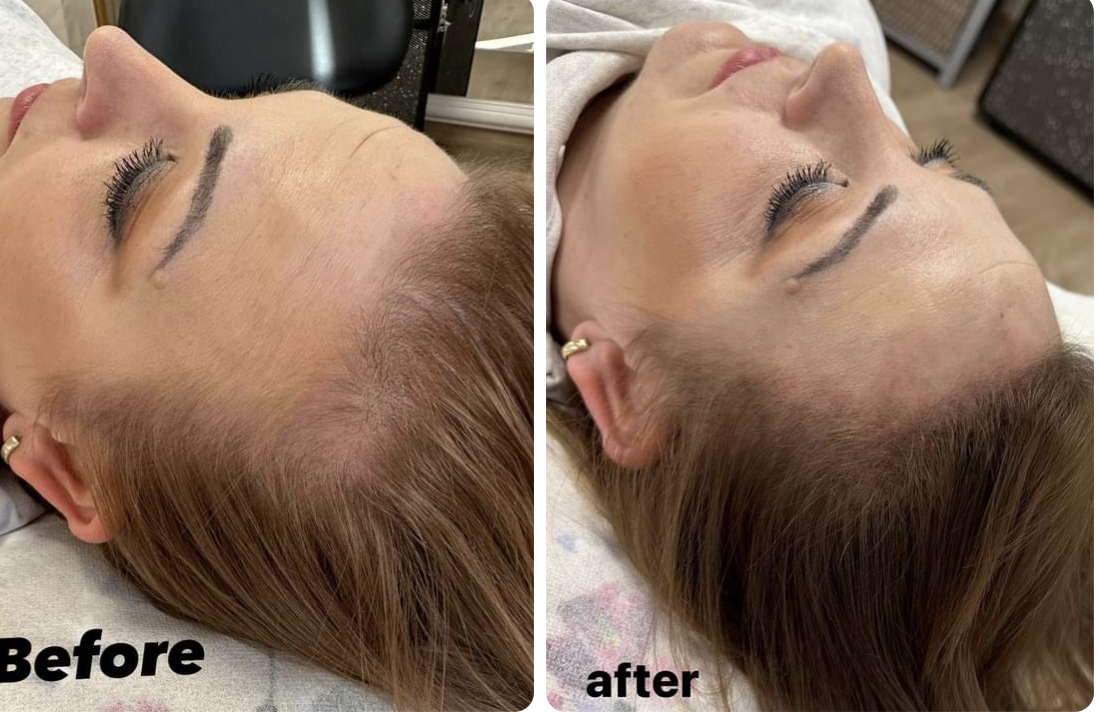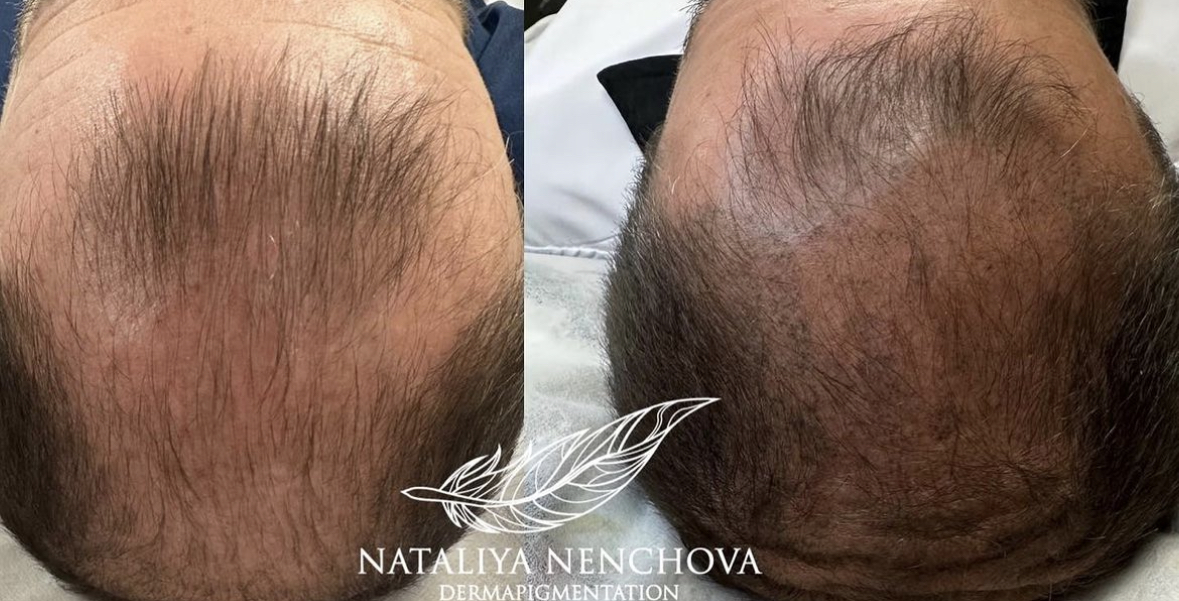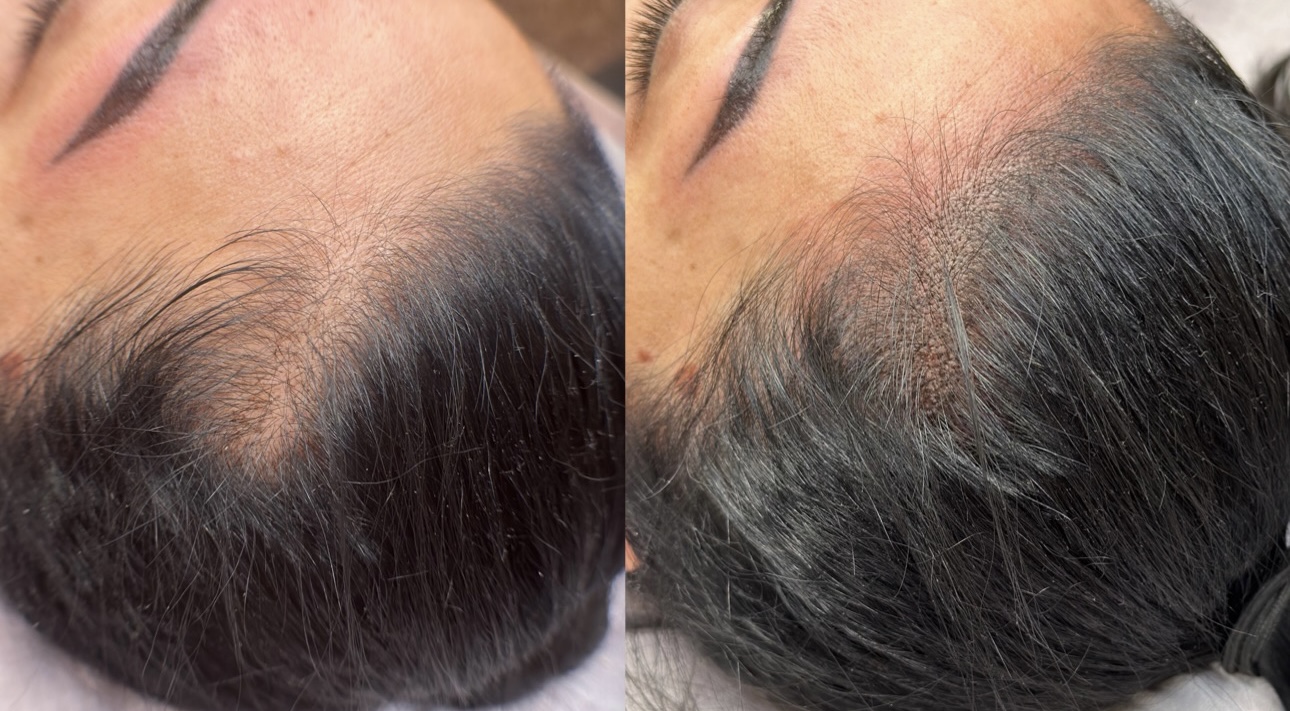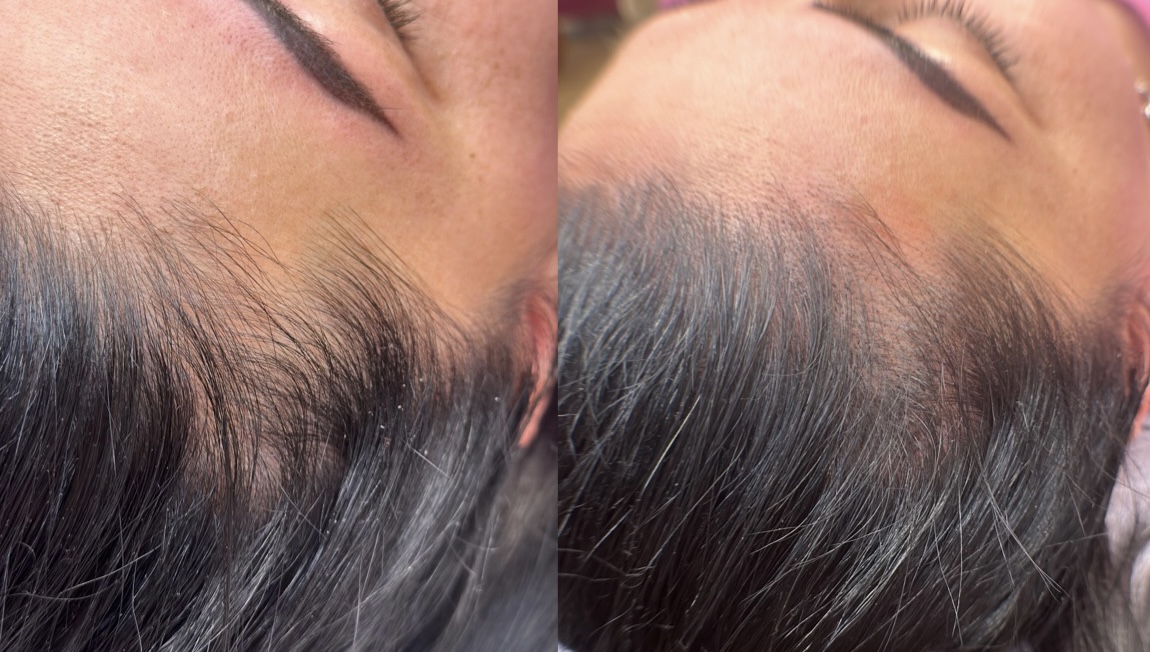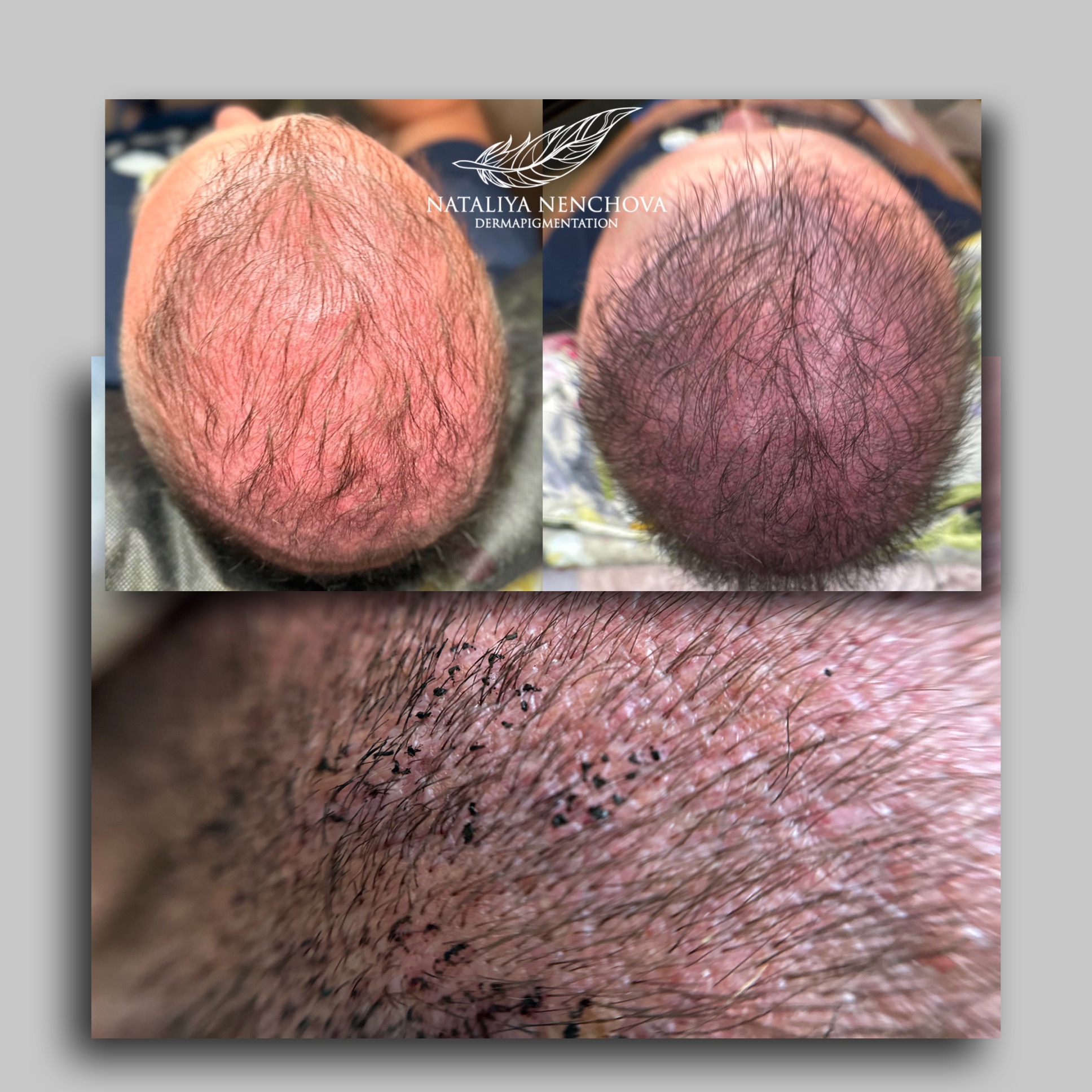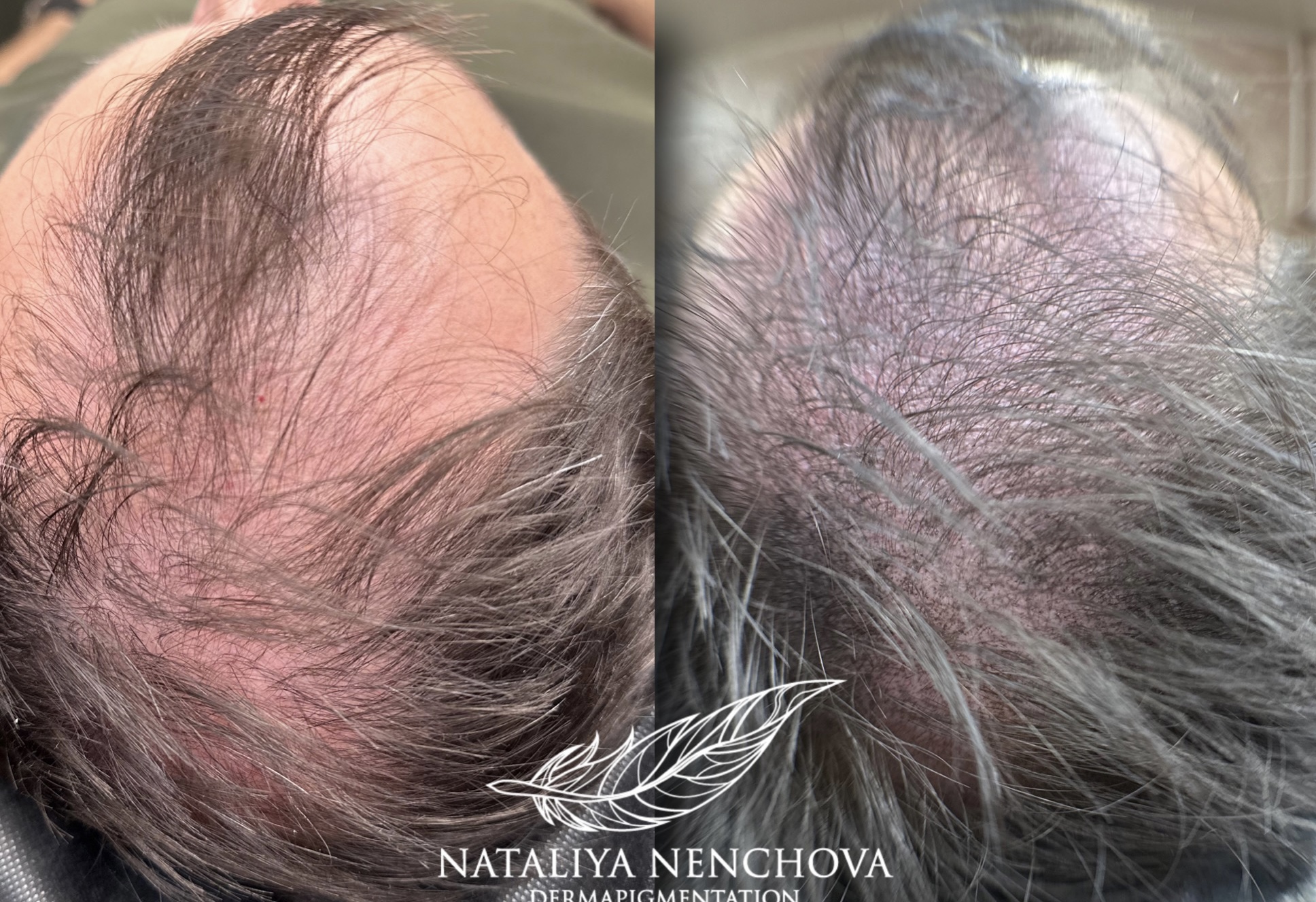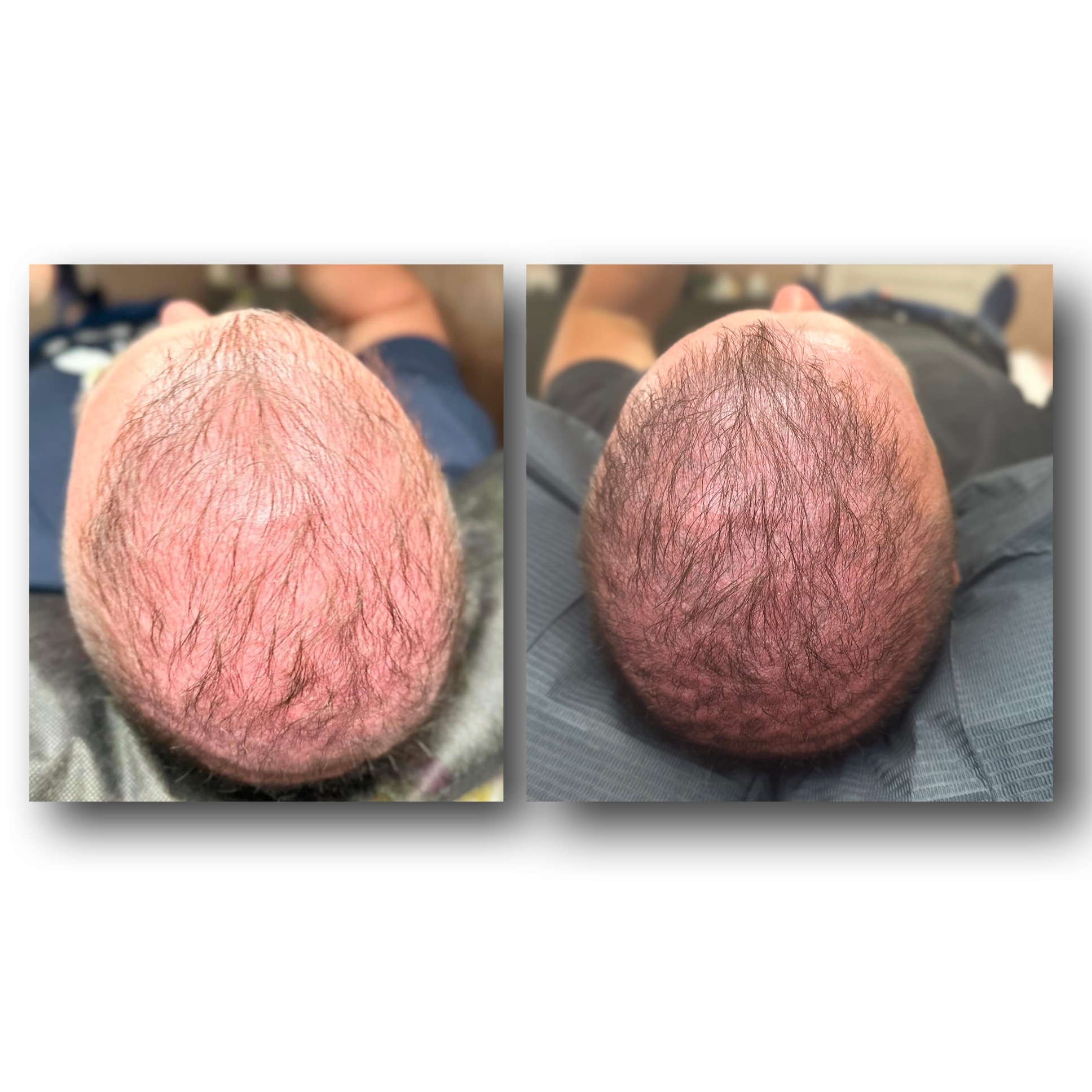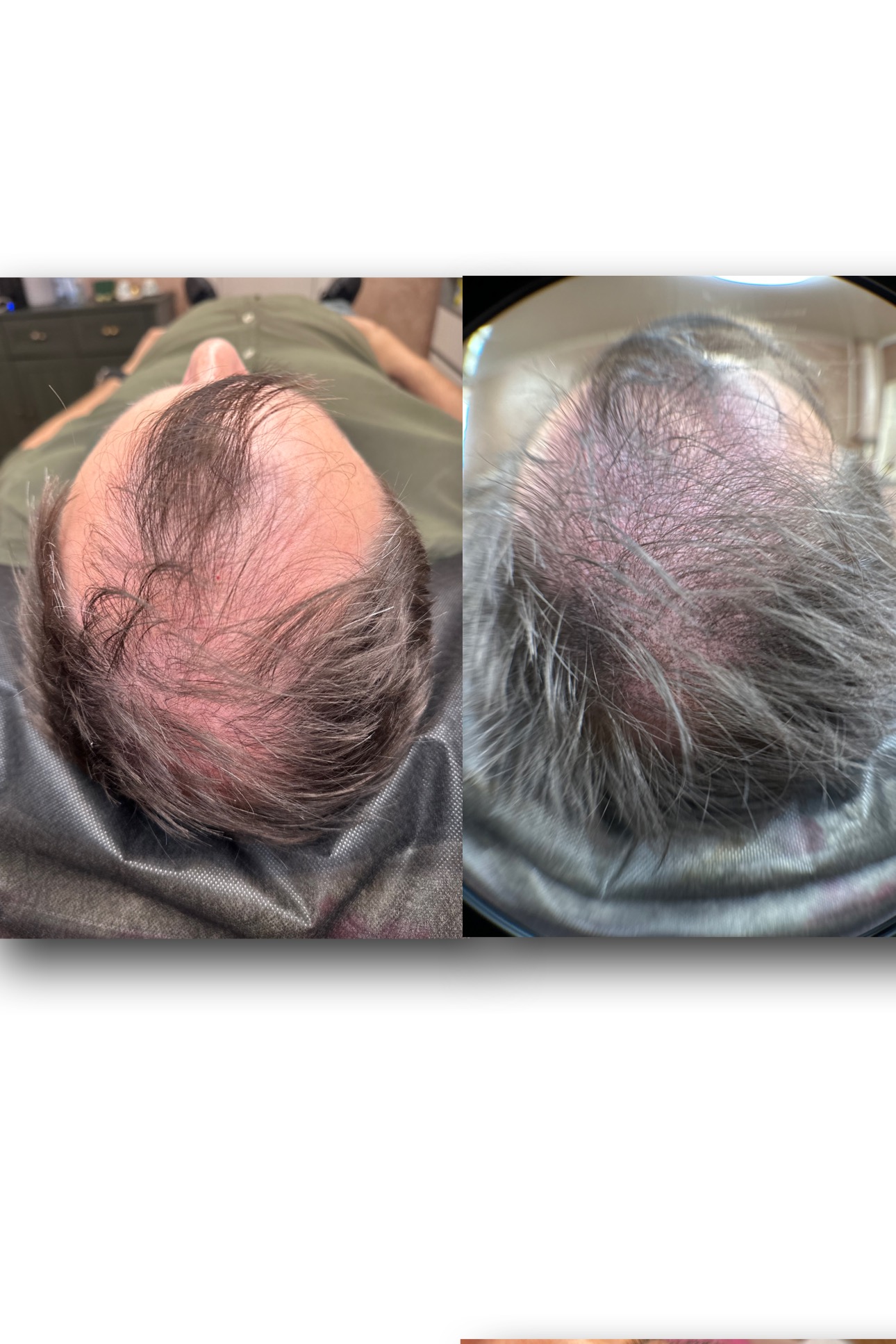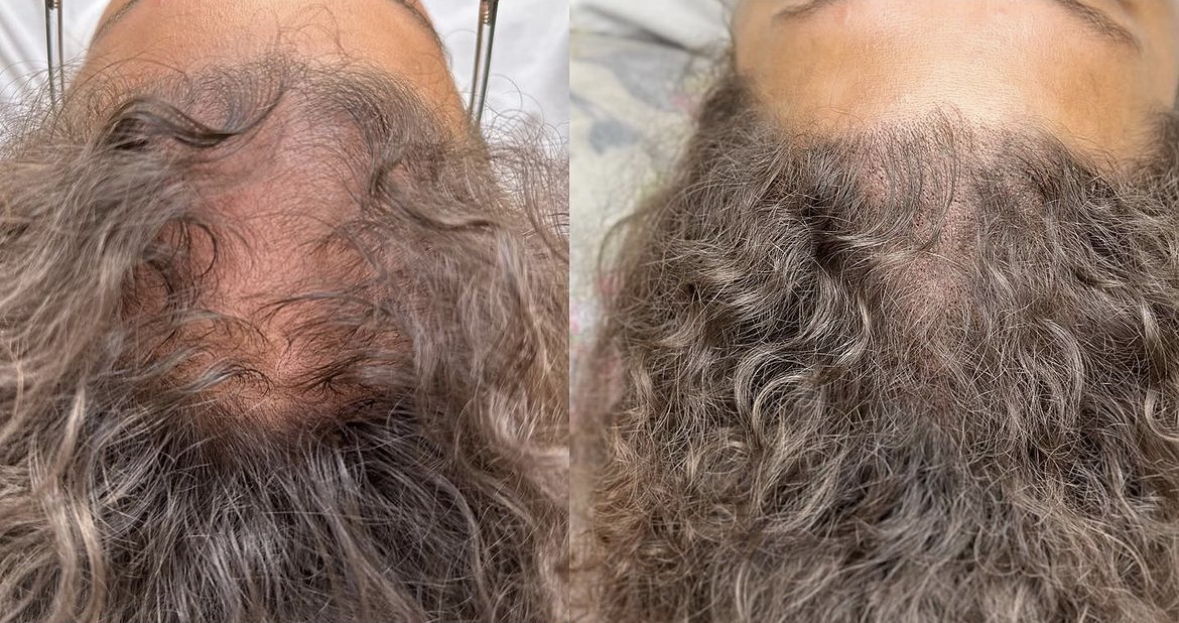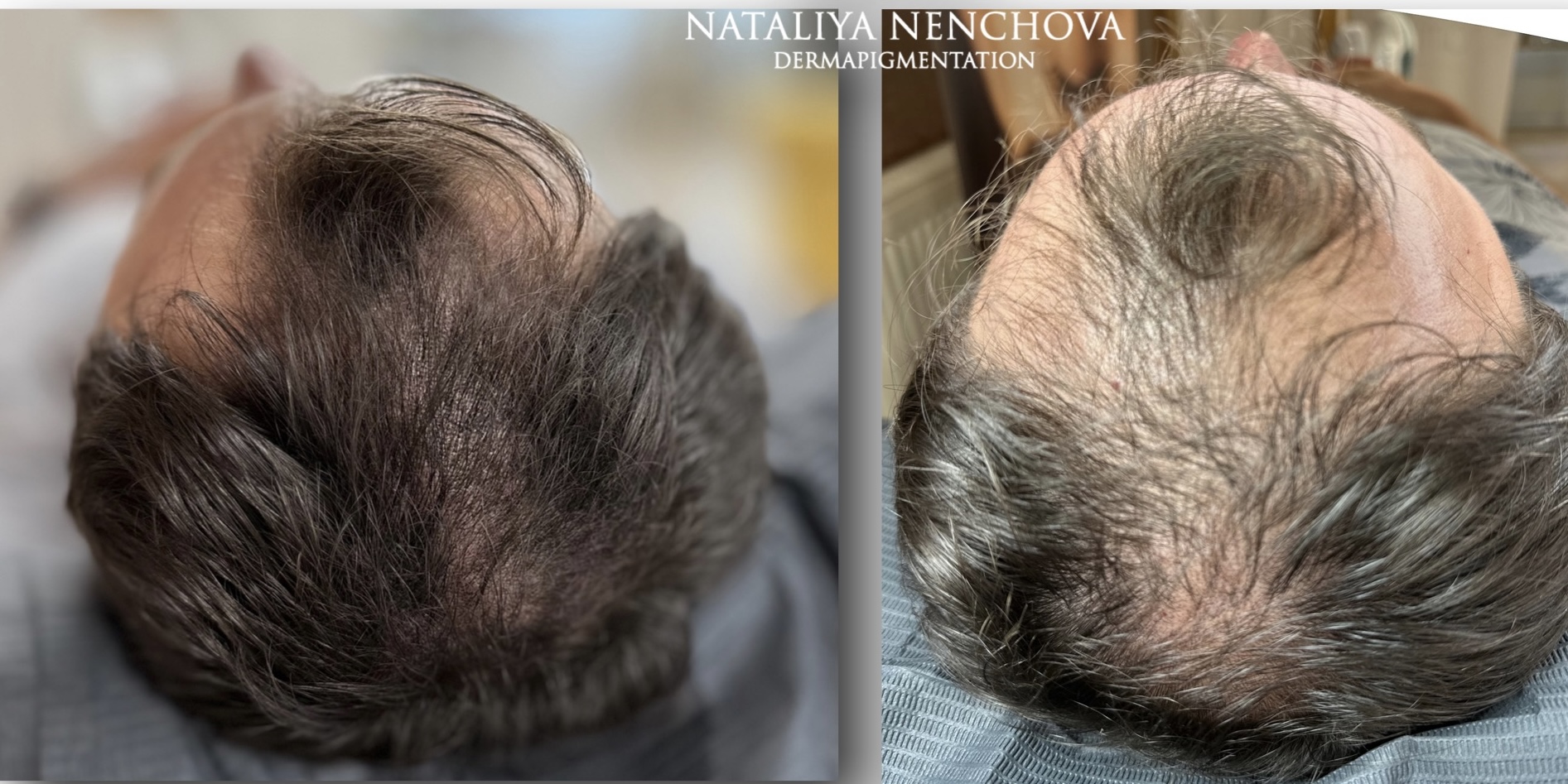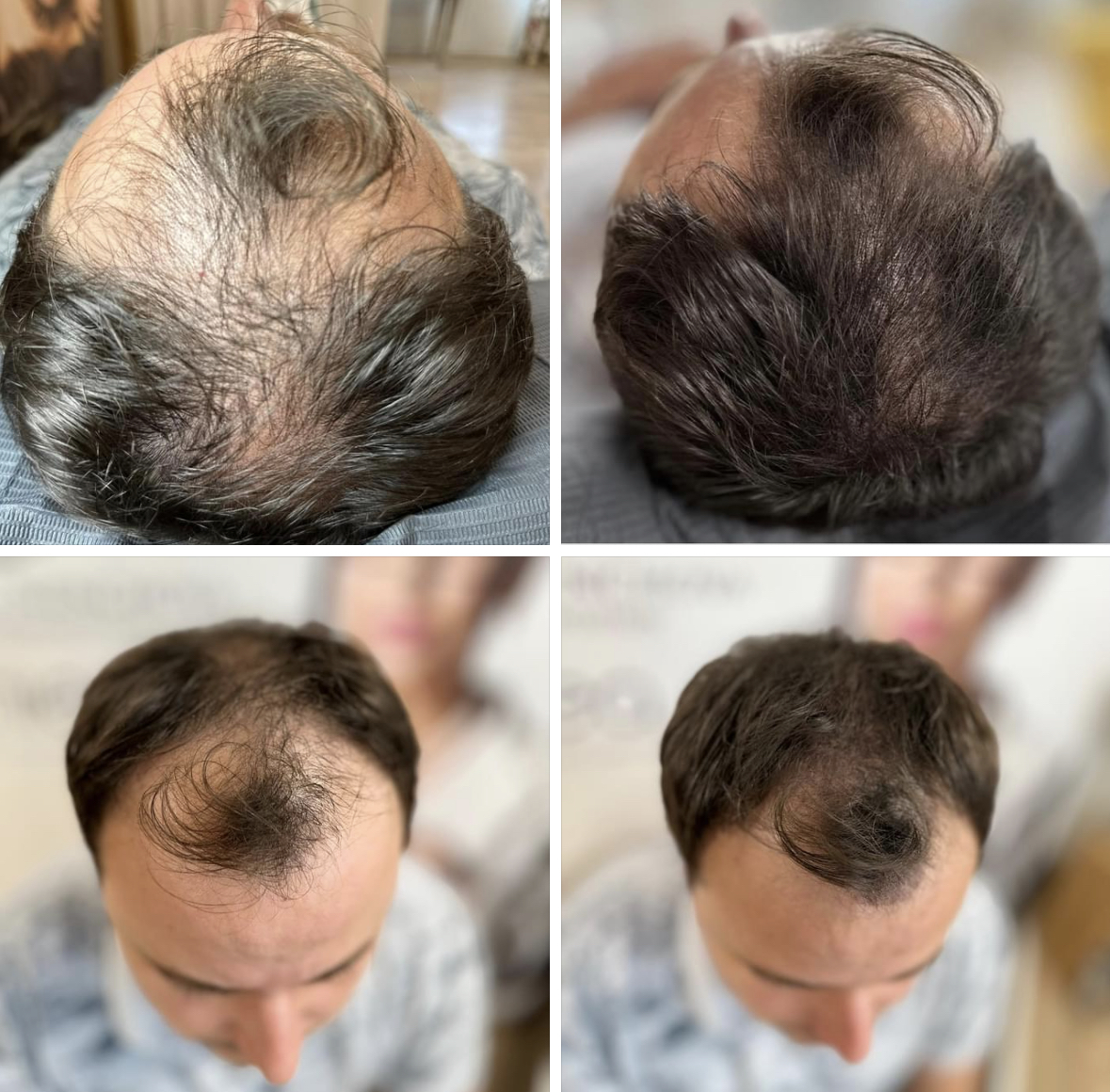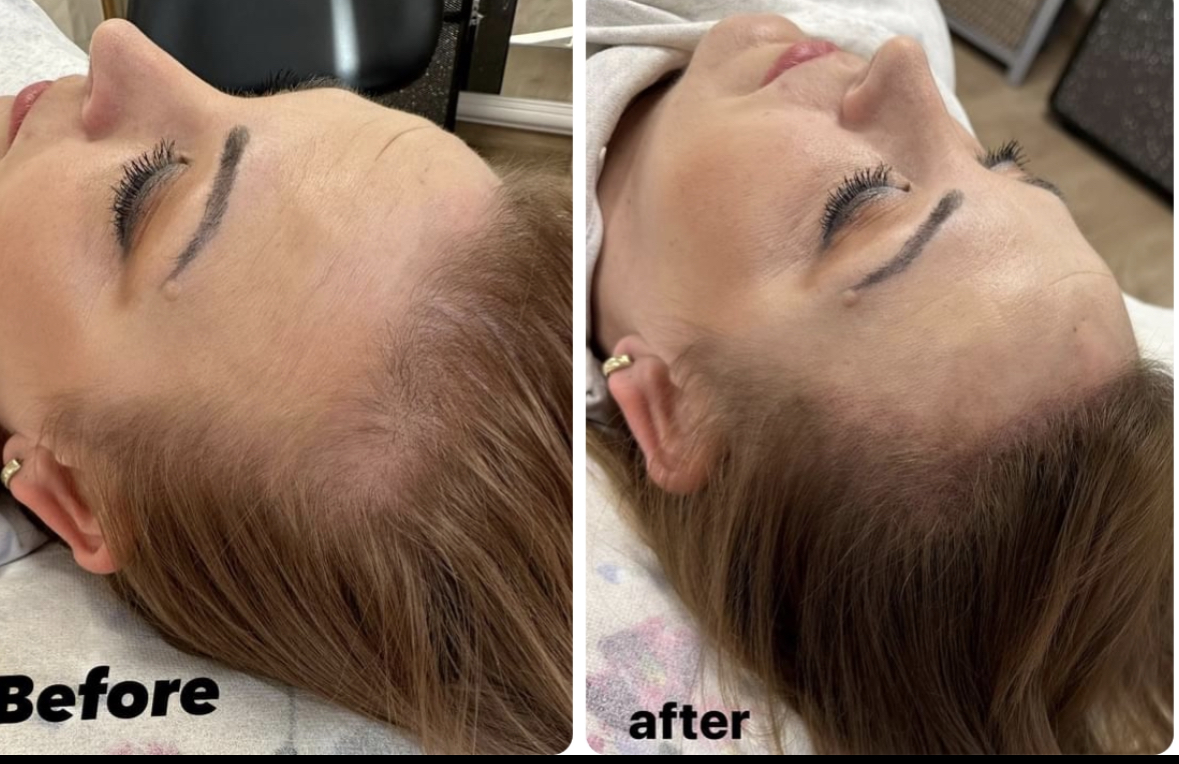TRICHOPIGMENTATION
What is trichopigmentation?
The purpose of trichopigmentation is to create an optical illusion of hair presence where there is none. The procedure is also an adequate solution for problems and conditions related to hair loss (alopecia areata, androgenetic alopecia, alopecia universalis, general thinning), as well as for concealing scars after hair transplantation (generic scars on the scalp, FUT linear scars, FUE dot scars).
Hair is an important characteristic, but various factors can worsen it over time. Everything from genetics to stress can lead to unwanted hair thinning, hair loss, or similar issues. Fortunately, there are many solutions to combat this.
Trichopigmentation is a temporary, "tattoo-like" experience where a trained professional creates the illusion of hair follicles on a person's scalp using specialized pigments and a specialized micro-needle. Unlike its permanent counterpart, SMP (scalp micropigmentation), trichopigmentation can last between 6 to 24 months, with an average duration of one year.
Why choose trichopigmentation over scalp micropigmentation?
Scalp micropigmentation is permanent and can last a lifetime if properly maintained. However, this fact may not be a desired effect for everyone.
For example, a man in his younger years may decide that he wants a perfectly shaped hairline to help him follow design trends in hairstyles, like those popular among celebrities such as Drake. But this trend may not be what he needs in later years. Regardless, SMP will not disappear, and he will be stuck with the same hairline for at least the next 6 years, and even after that, it will begin to fade but still remain.
Those who expect their hair to grow back soon prefer trichopigmentation over regular micropigmentation, as the effect of trichopigmentation is not permanent.
When to choose trichopigmentation?
There are many forms of hair loss (alopecia), with causes that can vary significantly, and in some cases, they may be mixed and combined in different proportions, contributing to thinning or loss of hair. It seems that 88% of people have to deal with issues related to at least one type of androgenetic alopecia, which in some cases is reversible, in others regresses, while in some other cases it worsens over time.
Alopecia
-
Androgenetic alopecia (male/female pattern
baldness):
The most common type of hair loss, resulting from the genetically determined sensitivity of hair follicles to the sex hormone dihydrotestosterone (DHT). In the early stages of the disease in men, gradual recession of the frontal hairline is observed, and in the final stage, the bald area takes on a clearly defined horseshoe shape. In women, the condition is characterized by widespread thinning and loss of hair and/or baldness starting from the crown of the scalp.
-
Alopecia areata (spot/circular hair loss)
This type of alopecia is considered an autoimmune disease, where lymphocytes attack healthy cells – in this case, hair follicles, suppressing or completely stopping hair growth. It is characterized by the appearance of bald patches with a circular shape on the scalp, which, in rarer cases, can expand to complete hair loss (alopecia totalis).
The progression of androgenetic alopecia can be slowed down with the oral and topical application of certain medications, combined with appropriate cosmetic products and procedures. Trichopigmentation is an excellent procedure and solution that can be applied either in combination with medication or as a standalone treatment.
Camouflage/Concealment of Scars:
Trichopigmentation can help camouflage/conceal scars on the scalp (FUT linear scars and FUE dot scars from hair transplantation; generic scars on the scalp skin).
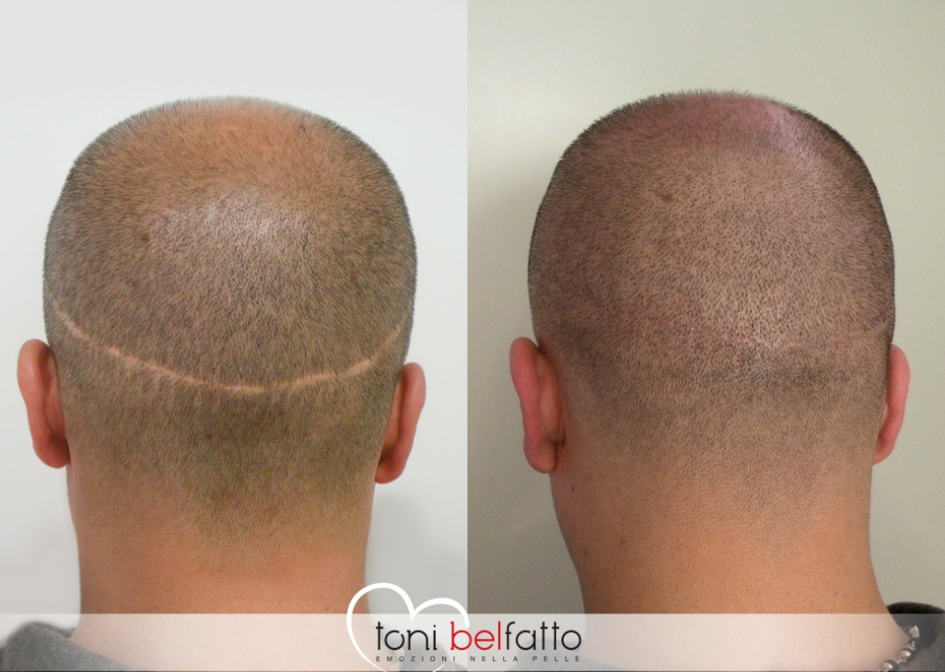
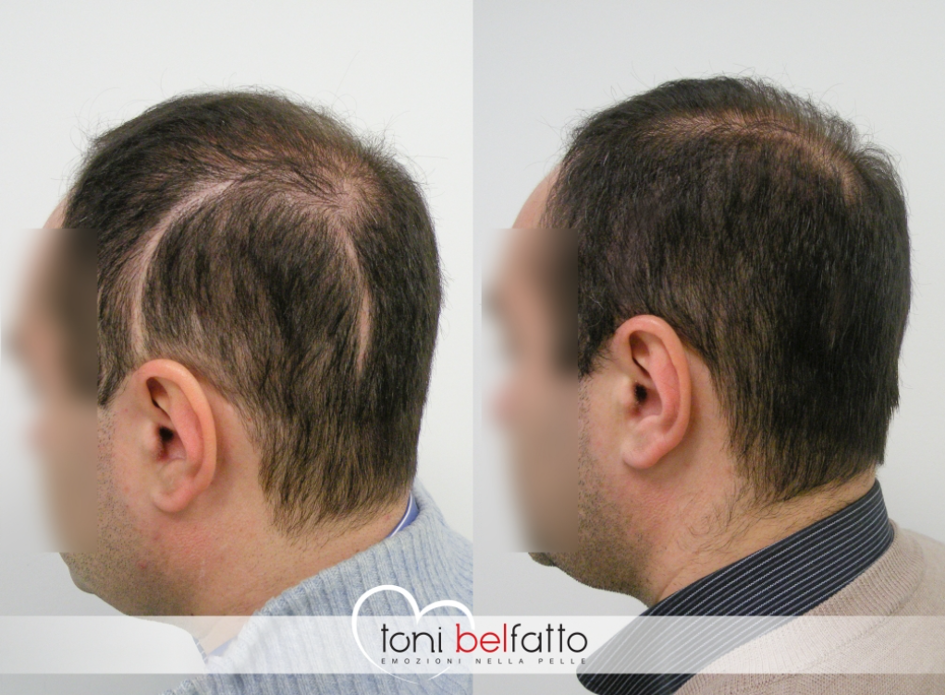
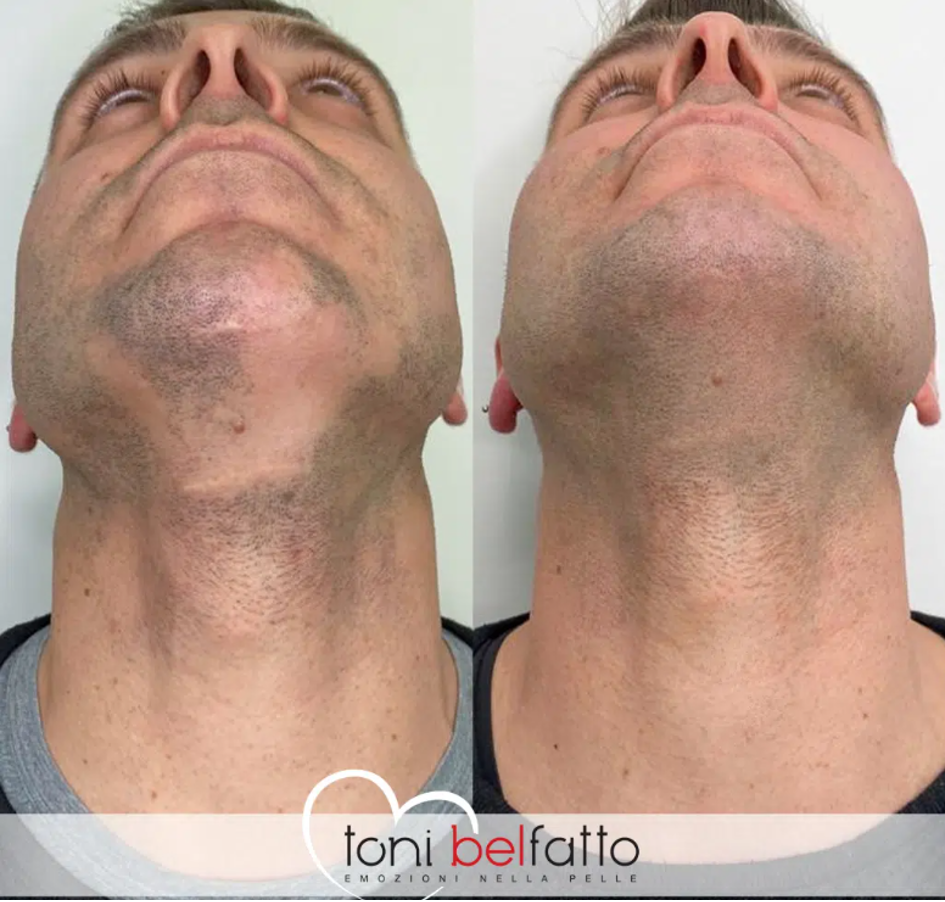
Other cases where trichopigmentation may also be a suitable procedure:
- Many patients undergoing chemotherapy and radiation therapy for cancer will experience hair thinning. Sometimes these patients may also experience hair loss. When this is the case, the patient may not need a permanent solution. After cancer treatment, the patient will find that their hair starts to grow back. At this point, the pigmentation created during a procedure like trichopigmentation will no longer be necessary. Since trichopigmentation fades over time, it provides the ideal scenario for these temporary cases.
- There are also other conditions that can cause a patient to experience hair loss. Additionally, some medications are also associated with hair loss and thinning. When these scenarios arise, the patient will need to wait for their hair to grow back once the cause has been resolved. Trichopigmentation can provide a temporary way to enhance the appearance of thick hair during these scenarios.
What can we achieve with tricopigmentation?
There are three main types of visual effects that can be achieved with tricopigmentation:
-
Density effect:
This type of tricopigmentation can make an area with thinning hair appear dense and fuller. This can help boost a person's self-esteem and make them feel more comfortable in their own skin.
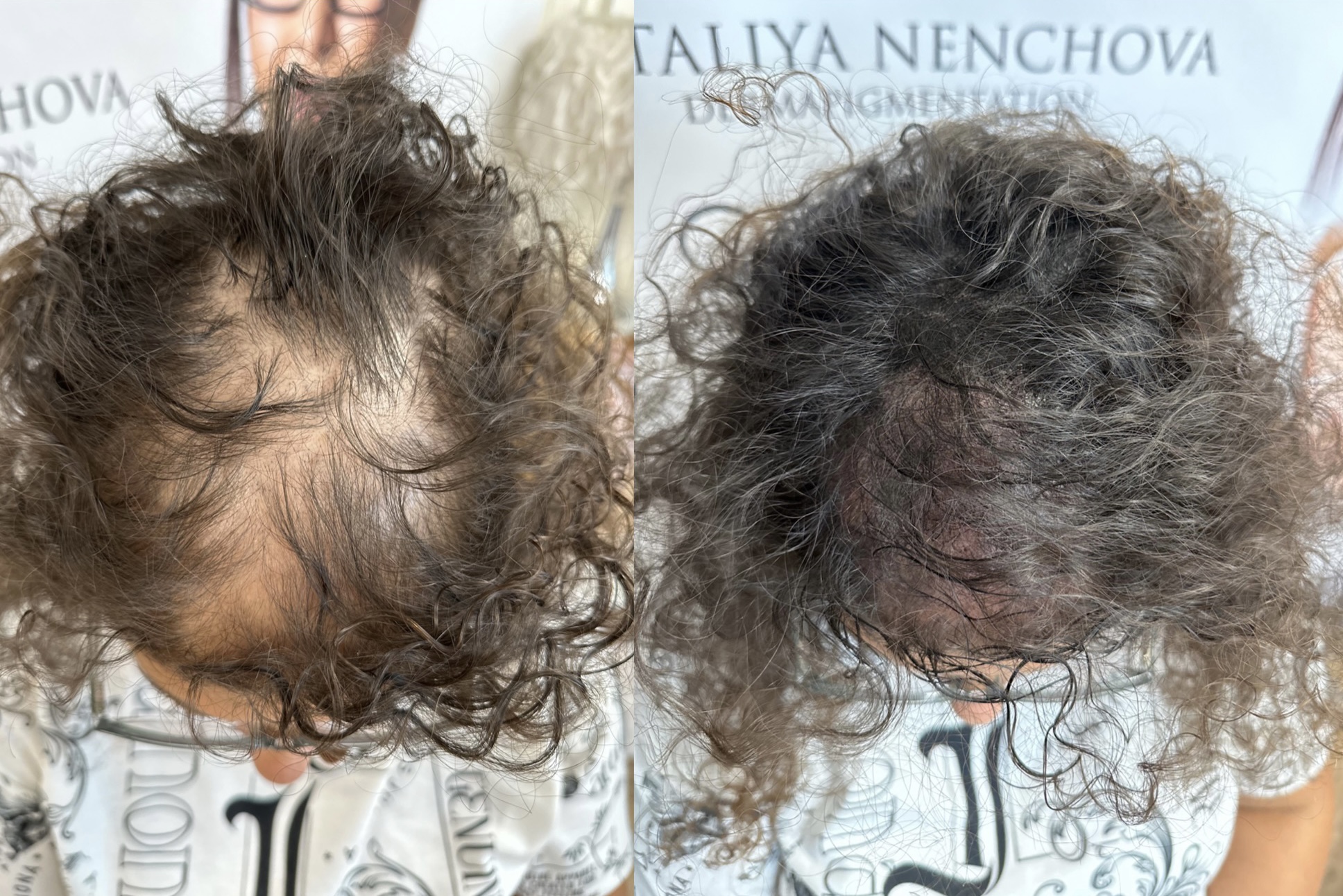
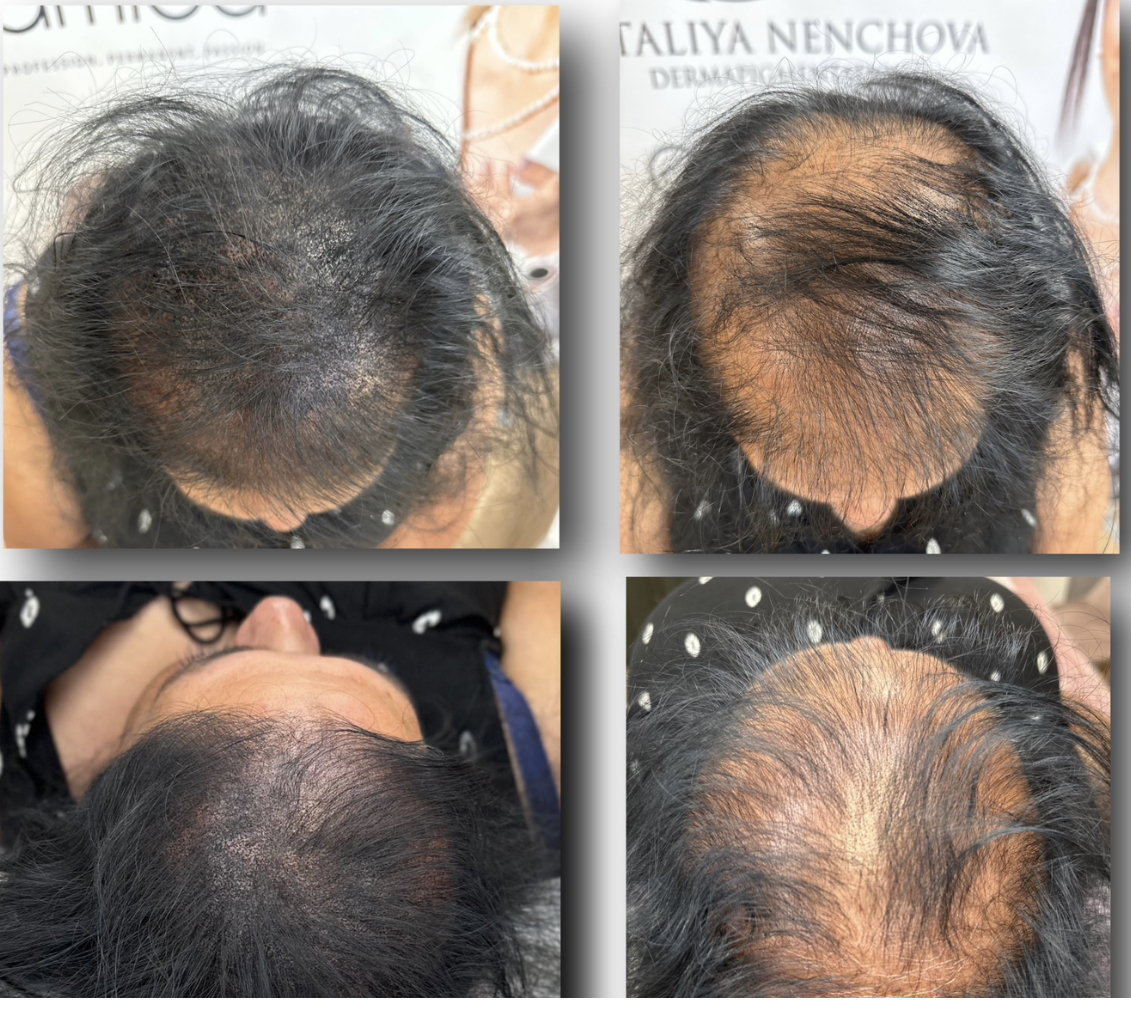

-
Shaved effect:
An ideal solution for those who want a completely shaved appearance, similar to a buzz cut. People with alopecia prefer this method, as well as those who cannot fully restore their hair. This method makes the follicles on the scalp appear fuller and denser. The shaved effect also helps people experiencing a receding hairline and can improve the shape of the hairline.
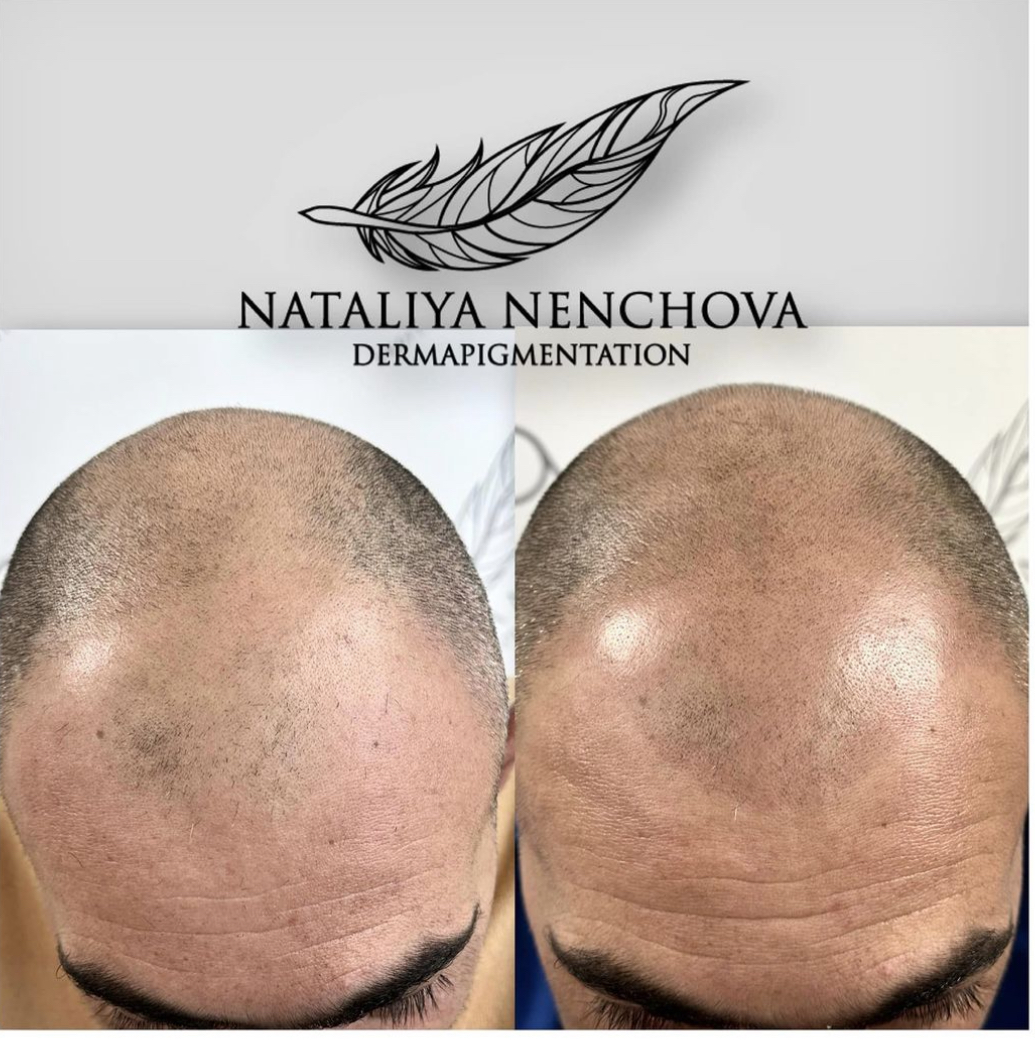
-
Short hair effect:
This effect is suitable in cases where there is existing hair of length 1-3 cm. The presence of hair is necessary for the "illusion" to be effective – the existing hairs create volume around the added pigmentation from the tricopigmentation specialist.
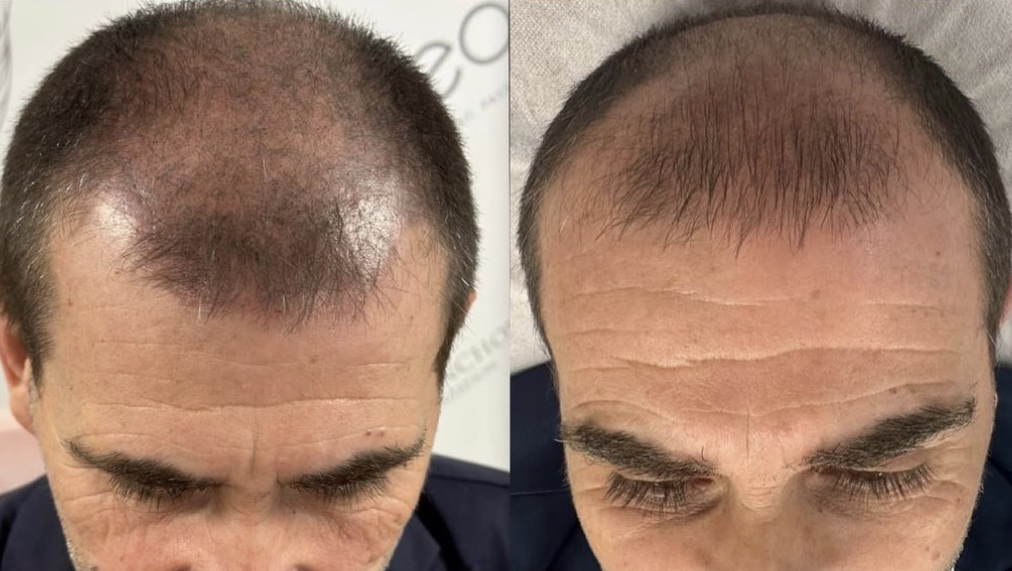
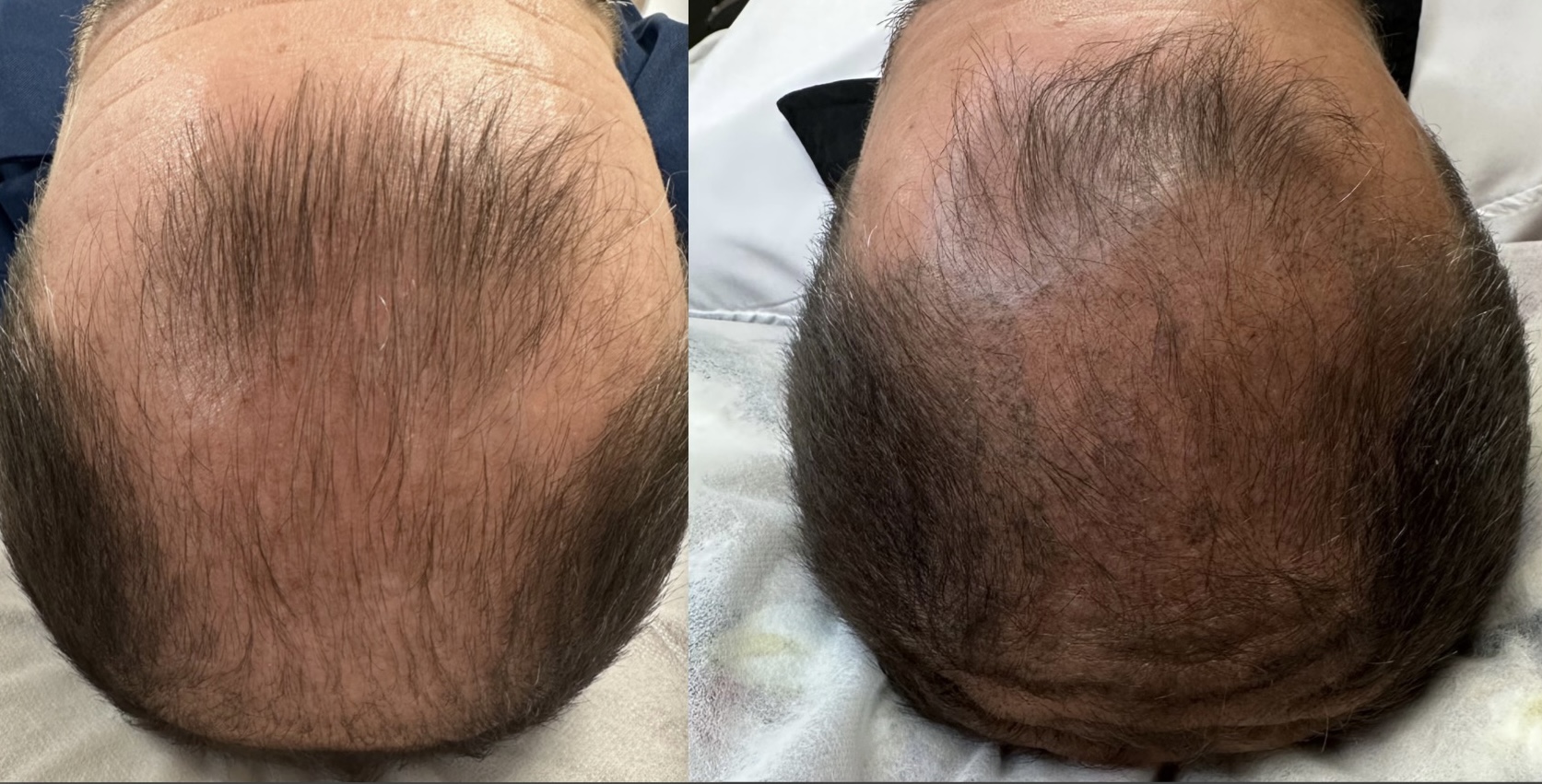
Contraindications
There are no contraindications associated with the practice of tricopigmentation, as the pigments are biocompatible and the materials used are strictly single-use. It is not recommended to perform tricopigmentation on individuals with neurological, cardiovascular, and coagulation disorders, pregnant and breastfeeding women, and minors without the presence of both parents.
How long does the procedure take?
To achieve 100% effectiveness from tricopigmentation, three sessions are required, with a 30-day interval between each session. The first tricopigmentation session can last from one to three hours, depending on the level of hair loss and the areas being treated. The second session may take only two hours. The third session may take less or the same amount of time. It all depends on the density of the pigmentation, the speed of work, and the area being treated.
After the third session, follow-up maintenance is performed every 6 to 18 months, depending on the patient's specifics.
Maintenance sessions do not take as long as the initial ones. The practitioner monitors the fading of the scalp pigmentation and improves the appearance of the spots. Typically, it will take less than two hours to complete the maintenance procedure.
Is tricopigmentation painful?
No. In most cases, tricopigmentation does not cause pain. Anesthesia is not required unless the patient is particularly sensitive to pain due to other medical reasons, such as previous surgeries or health conditions. If necessary, special local anesthetics are used during the procedure to make the process completely painless.
How often is maintenance needed?
Since tricopigmentation is not permanent, it requires annual maintenance by a qualified tricopigmentist.
The patient should also take into account that in some individuals, fading occurs more quickly. It is important to consider the maintenance schedule on an individual basis. The patient should pay attention when the tricopigmentation points start to fade. When this happens, the patient should consider scheduling an appointment. Sometimes this may occur earlier than a year. In other cases, the appearance of the points made during the initial tricopigmentation procedure will remain visible for a longer period.
Maintenance will not be necessary if the patient no longer wishes to maintain the look achieved through the tricopigmentation procedure. If this is the case, the patient can simply wait for the points made during the procedure to fade away.
How to prepare for the tricopigmentation procedure?
There are no special preparatory steps that are generally recommended for a person who wants to undergo a tricopigmentation procedure.
During the initial consultation, the procedure itself is not performed. During the consultation, the patient and the tricopigmentist discuss everything related to the procedure, the individual needs of the patient, and their expectations. The initial consultation is extremely important for the success of the procedure.
Are the pigments safe?
The Amiea Vytal Scalp Pigment Range is a new generation of pigments specifically designed for scalp micropigmentation.
The formula contains a balanced ratio of oil and water, tailored to the anatomy of the scalp.
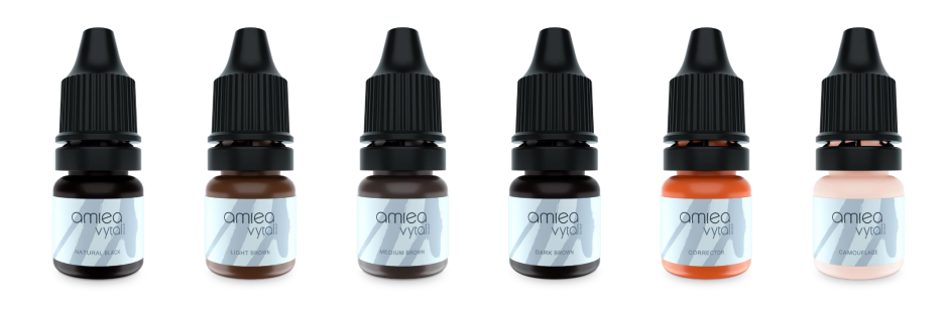
What is the cost of tricopigmentation?
The prices for tricopigmentation are variable, as it is necessary to consider how many areas need to be treated, and most importantly, the density of the areas. An area completely free of hair is different from an area that already has a certain density. The best way to find out what the cost will be for you is to contact me to schedule your consultation, where we will discuss your needs and expectations, as well as whether tricopigmentation is the right procedure for you.
*The images provided are of tricopigmentation procedures performed by Toni Belfato in the cities of Rome, Milan, Naples, Vicenza, and Casoli. They are before-and-after photos to help you better understand the results before and after the treatment.
